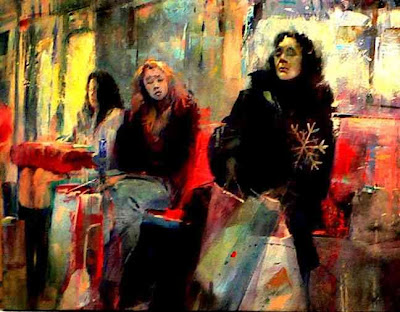What about art?
This article by the Washington Post's ombudsman Deborah Howell exemplifies the sort of stuff that drives me batty about the Washington Post's coverage of the visual arts.
While one one hand they claim that they deliver fair and appropriate coverage, and while new editors all promise to look into the complaints about lack of appropriate coverage, and while they also promise to expand it, the truth is that it continues to shrink while the WaPo tells us that if we "don't get it, we don't get it..."
Ms. Howell writes an interesting article titled "The Critics Have Their Critics," and it goes along like this:
Who decides whether a play, concert or dance performance gets reviewed in The Post and whether the review is favorable? Readers complain about the absence of a review, an unfavorable one, or a review they think is given insufficient length or prominence.
Post Arts Editor John Pancake says the chief critics, all based in Style, decide what to review and who will review it -- a staff writer or a freelancer. A critic's job is to be, well, critical. While culturally sophisticated people can disagree, the critics' decisions to review and the review itself are The Post's guide to readers in the performing arts. The critics also write news and feature stories.
She then goes on to quote, discuss and explain away the theatre, dance, classical music, and pop music.
Two questions:
What about art?
What about Blake Gopnik, Michael O'Sullivan (not based in Style, but nonetheless a Washington Post art critic) and freelancer Jessica Dawson?
The Post already has the most minimalist of arts coverage of any major newspaper in the US, and its Chief Art Critic is the only one that I know of who is allowed not to report on his city's art galleries, a job and task that he had in his previous art critic assignment for a Canadian newspaper.
Maybe Ms. Howell will soon be doing a separate article discussing the spectacular apathy that the Post exhibits towards its city's art galleries and artists.
Yeah...
Second question: My good friend John Pancake says "the chief critics, all based in Style, decide what to review and who will review it -- a staff writer or a freelancer."
This is interesting news to me, as it reflects a change in how gallery reviews were done in the past, where Jessica Dawson pretty much had a free hand on what she chose to review and who and what gallery she chose to ignore. Apparently, according to Pancake anyway, now Blake Gopnik tells Dawson what her assignment is...
Interesting uh?







